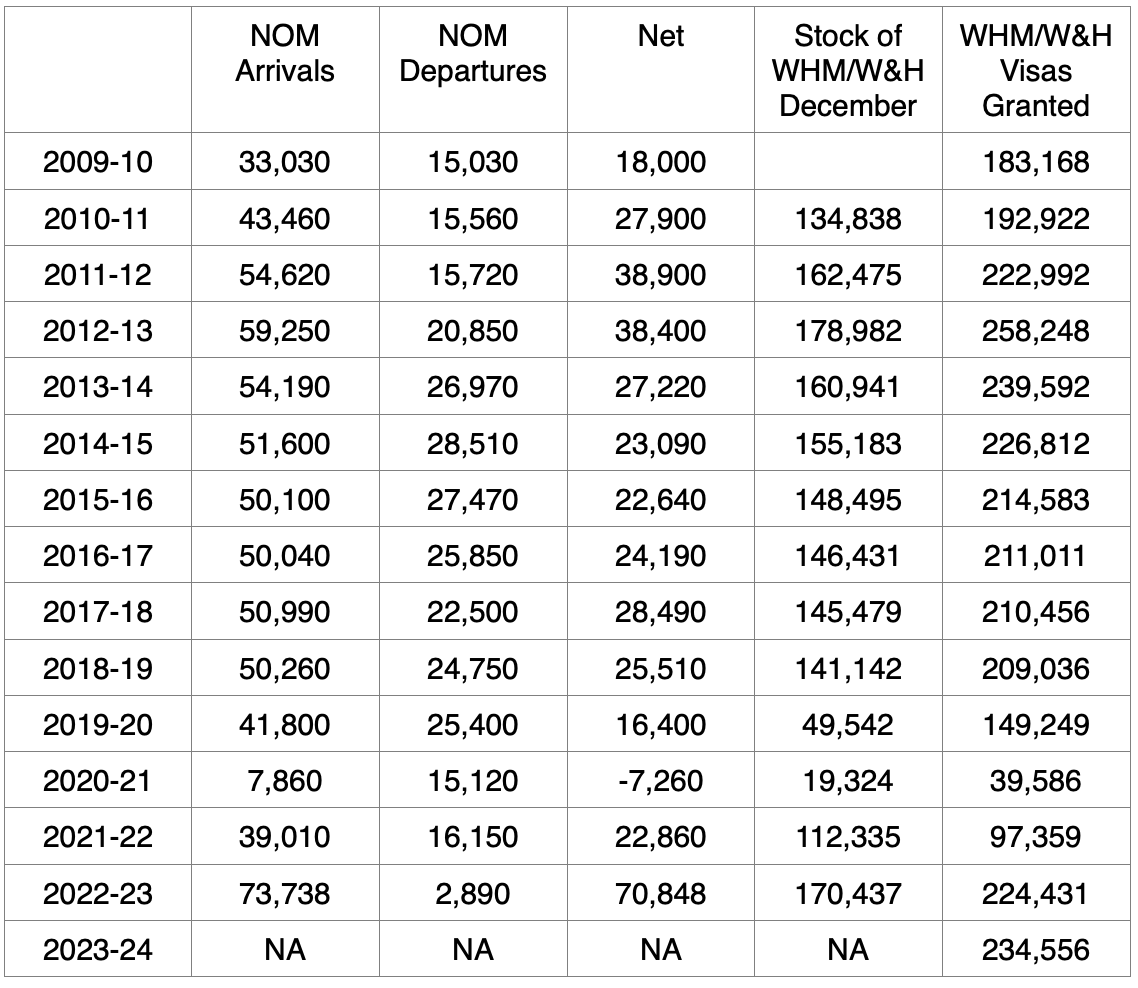Working holiday makers – the ignored contributors to net migration
August 13, 2024
In the white-hot debate about the blow out in net migration and targeting of the student contribution to net migration, the contribution of Working Holiday Makers to net migration, which is not insignificant, has largely been ignored by both politicians and the media. Can that continue?
The uncapped Working Holiday Maker visa (WHMs – SC 417) and the generally capped and subject to an English test Work & Holiday visa (W&H – SC 462) are significant to Australia’s tourism industry, both as a source of labour as well as consumers of tourism products. They also contribute significantly to the farming labour force.
Table 1: WHMs and W&H

As the labour market recovered after the Global Financial Crisis, there was a steady increase in WHM/W&H visa grants rising from 183,168 in 2009-10 to 258,248 in 2012-13. That led to a rising contribution to net migration from 18,000 in 2009-10 to 38,400 in 2012-13 and a growing stock of such visa holders in Australia from 134,838 in December 2010 to 178,982 in December 2012.
That fell back when the labour market weakened in 2013-14 and never recovered until after covid. The closure of international borders in 2020 led to the net migration contribution of WMM/W&H visas holders falling into negative territory and the stock falling to a 20+ year low of 39,586.
Similar to the situation with student visas, the Coalition Government introduced a range of measures to accelerate growth in WHM/W&H visas including:
- fee-free applications during the first half of 2022;
- opportunity for WHM/W&H visa holders to secure a third such visa and broadening the type of work in regional Australia that could be undertaken to secure a second or third visa;
- from 2014 to January 2022, new W&H visa agreements with 18 additional nations;
- a 30 percent increase in W&H visa caps;
- allowing WHM/W&H visa holders to work for more than 6 months with the same employer – this expired on 30 June 2023; and
- increasing the age limit for UK citizens to secure a WHM visa from 30 to 35 and automatically providing for 3 year stay without having to meet regional work requirements.
As a result, first WHM visas granted increased from 145,756 in 2022-23 to 154,704 in 2023-24. That was offset by a fall in first W&H visas granted from 35,526 in 2022-23 to 24,939 in 2023-24. Second and third WHM/W&H visas granted remained strong in 2023-24.
With a very strong labour market, the WHM/W&H visa contribution to net migration increased sharply from 22,860 in 2021-22 to a record 70,848 in 2022-23. While that is likely to have fallen back in 2023-24 as more WHM/W&H visa holders depart, it will still be historically high.
If the Government is to reduce net migration in 2024-25 to 260,000 as forecast and then to a long-term level of 235,000 per annum, it will need to tighten WHM/W&H visa policy. Possible options include:
- removing the third WHM/W&H visa option; and/or
- introducing an English language test for WHM visa applicants as exists for W&H visa applicants; and/or
- reducing promotion of these visas by Commonwealth and state tourism bodies.
But these changes may not be sufficient if Peter Dutton’s promise to reduce net migration to 160,000 per annum is to be delivered. The problem for Dutton will be strong opposition to cutting WHM/W&H visas from the National Party which will not want any reduction in the flow of these visa holders to regional Australia.
Dutton may need to look elsewhere if he is to reduce net migration to 160,000 per annum. Perhaps he may follow Tony Abbott’s lead and drive-up unemployment to reduce net migration generally, including net migration of WHM/W&H visa holders?

